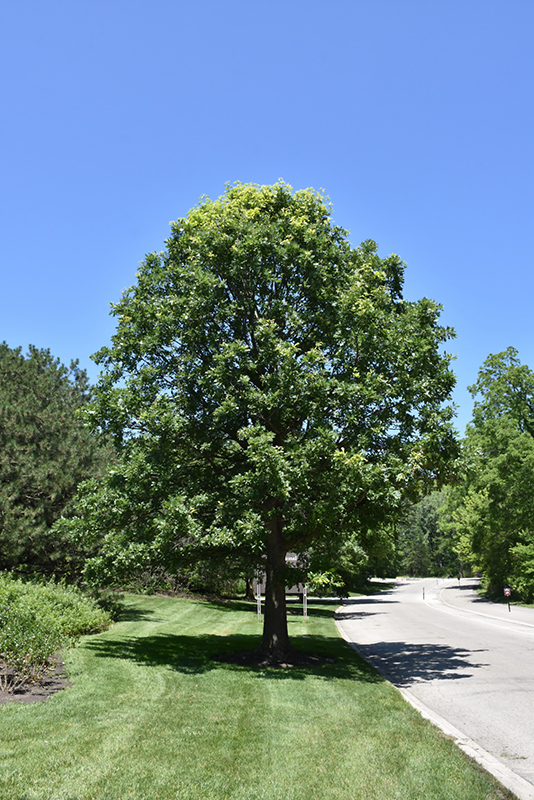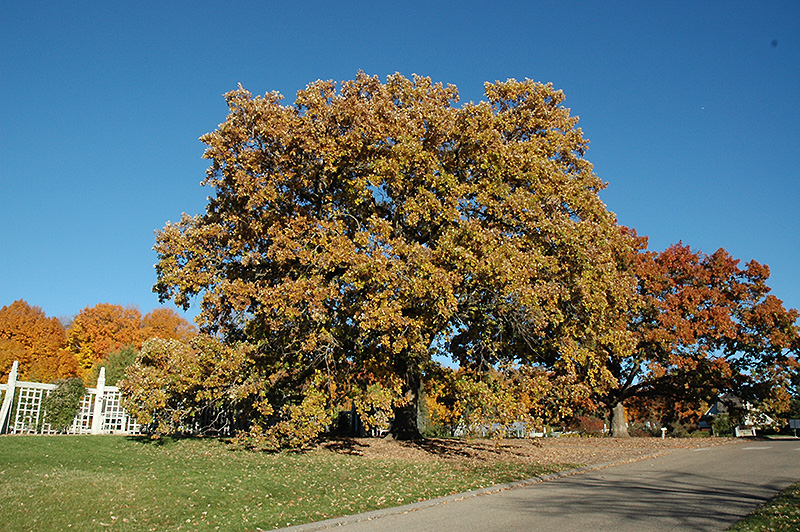Height: 80 feet
Spread: 80 feet
Sunlight:
![]()
Hardiness Zone: 2
Other Names: Mossycup Oak
Description:
The hardiest of the oaks, this shade tree is singularly majestic, with its picturesque wide-spreading habit of growth and gnarled branches, best for larger landscapes. Extremely tough and adaptable but relatively slow growing.
Ornamental Features
Bur Oak has dark green deciduous foliage on a tree with a round habit of growth. The glossy lobed leaves turn coppery-bronze in fall. The furrowed black bark adds an interesting dimension to the landscape.
Landscape Attributes
Bur Oak is a dense deciduous tree with a more or less rounded form. Its relatively coarse texture can be used to stand it apart from other landscape plants with finer foliage.
This tree will require occasional maintenance and upkeep, and is best pruned in late winter once the threat of extreme cold has passed. It has no significant negative characteristics.
Bur Oak is recommended for the following landscape applications;
- Shade
Planting & Growing
Bur Oak will grow to be about 80 feet tall at maturity, with a spread of 80 feet. It has a high canopy of foliage that sits well above the ground, and should not be planted underneath power lines. As it matures, the lower branches of this tree can be strategically removed to create a high enough canopy to support unobstructed human traffic underneath. It grows at a slow rate, and under ideal conditions can be expected to live to a ripe old age of 300 years or more; think of this as a heritage tree for future generations!
This tree should only be grown in full sunlight. It is very adaptable to both dry and moist locations, and should do just fine under average home landscape conditions. It may require supplemental watering during periods of drought or extended heat. It is not particular as to soil type or pH. It is somewhat tolerant of urban pollution. Consider applying a thick mulch around the root zone in both summer and winter to conserve soil moisture and protect it in exposed locations or colder microclimates. This species is native to parts of North America.


